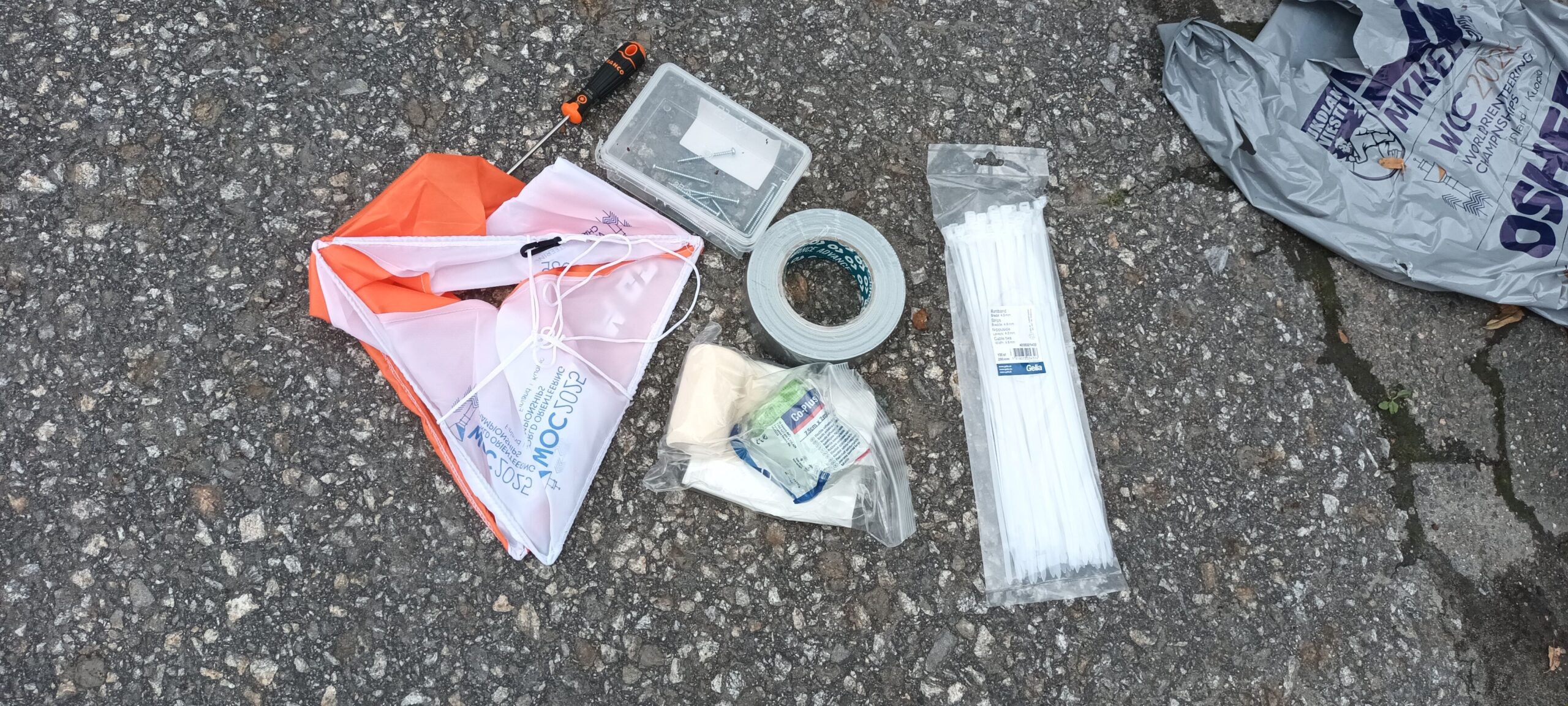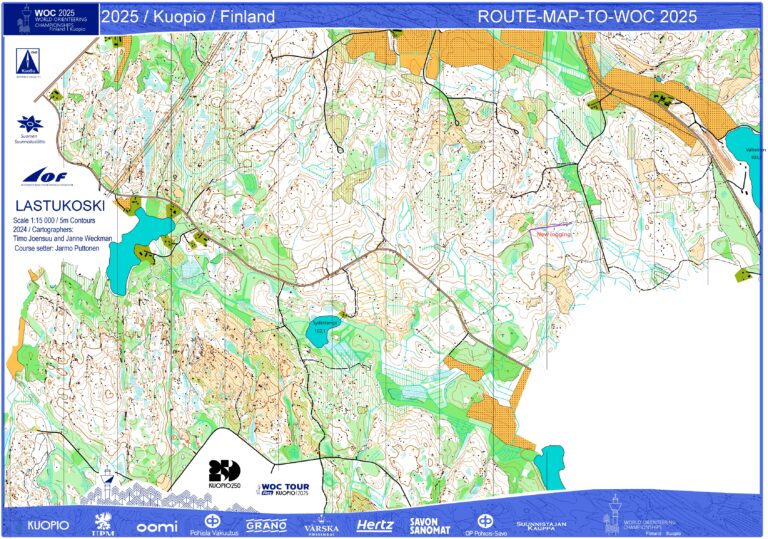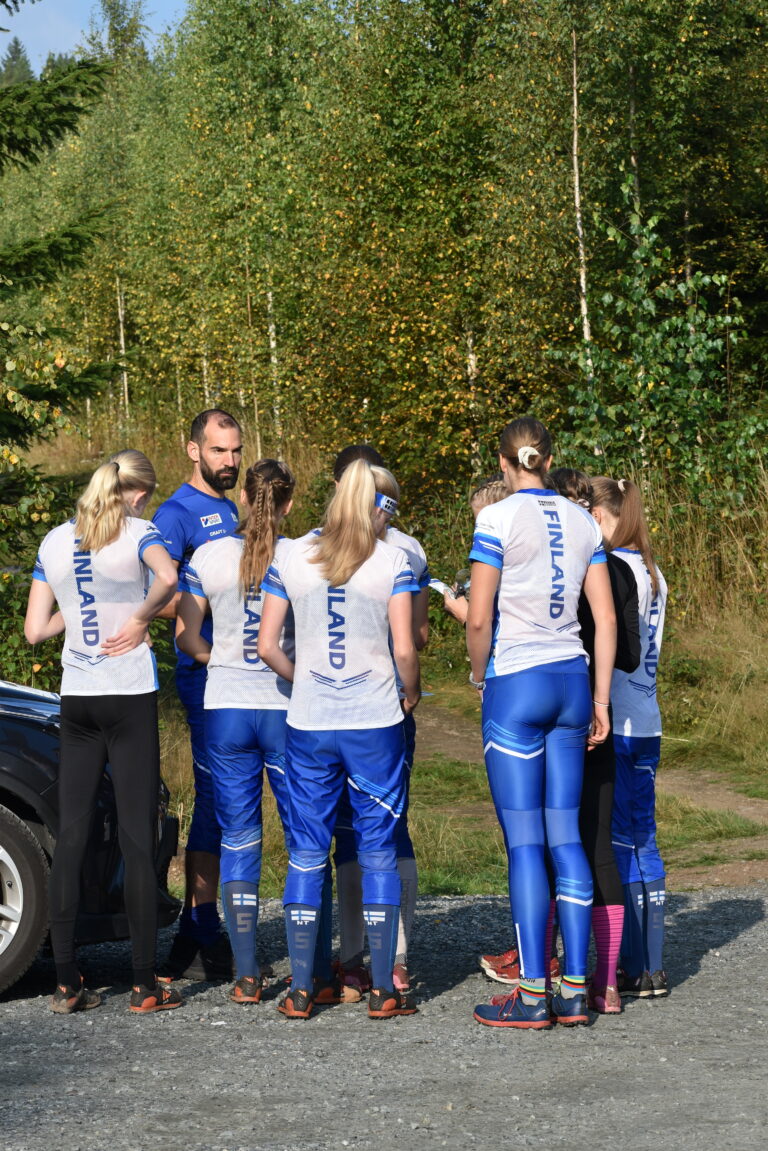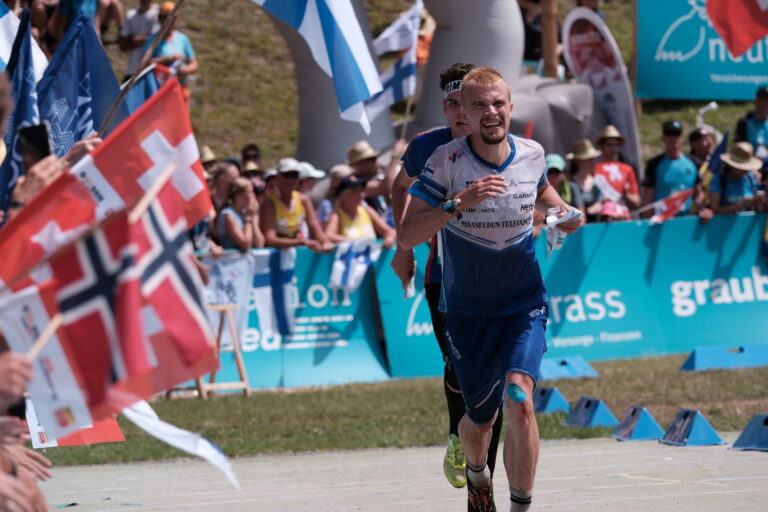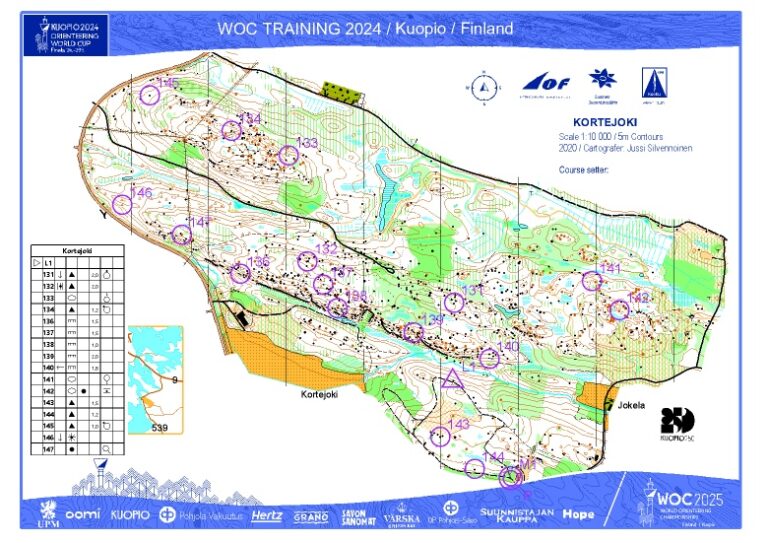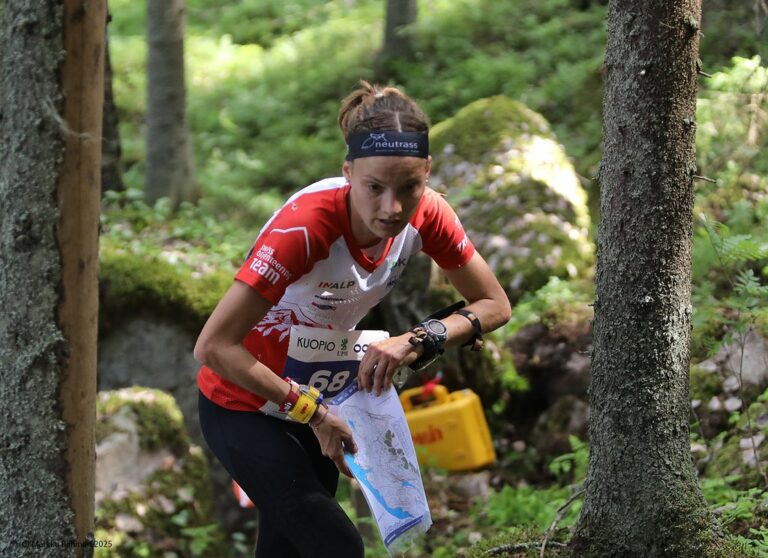MM-kilpailujen rastit tarvitsevat valvontaa ja huolenpitoa / Control point supervision and maintenance in the World Championships
On aamu ja rastivalvontatiimin vetäjä Henna Nurminen ohjeistaa tiimiään päivän tehtävään. Paikalla on kolmisenkymmentä talkoolaista, jotka kuuntelevat ohjeita ja pakkaavat reppuihin jaossa olevia eväitä: patukoita, hedelmiä ja juomia. Päivä on pitkä, sillä rastivalvontaa tehdään koko kilpailutapahtuman ajan. Porukka on pukeutunut sään mukaisesti ja päällystakkien väreissä on suosittu ohjeiden mukaista tummaa ja huomaamatonta. Rastivalvojien tulee pysyä tehtävässään näkymättömissä.
”Ennen kuin karanteeni sulkeutuu, kukaan ei lähetä mitään somekuvia”, Nurminen muistuttaa. ”Ketään ei saa myöskään neuvoa. Ainoa kontakti kilpailijaan on se, jos hän näyttää loukanneen itsensä. Silloin tulee selvittää, pystyykö kilpailija jatkamaan. Mikäli hän ei pysty etenemään, tulee ottaa yhteys ensiapuun.”
Jokaisen rastivalvojan vastuulla on omasta rastista huolehtiminen. Rastilipun tulee näkyä ja rastipukin pysyä paikallaan koko kilpailun ajan. Tarvittaessa rastilla tehdään huoltotoimia, joita varten rastivalvojien tukena ovat aluevalvojat. Aluevalvojilta löytyy erilaisia työkaluja, ruuveja sekä yleisesti kaikkeen nopeaan korjaamiseen soveltuvaa ilmastointiteippiä. Toisinaan rasti voi kaatua, mutta välillä tarvitaan muutakin, kuin sen pystyyn nostaminen.
”Tarvittaessa alustastaan irronneet leimauslaitteet kiinnitetään uudelleen”, Nurminen kertoo. Myös esimerkiksi revenneen rastilipun tilalle voidaan vaihtaa uusi.
Vain mielikuvitus on rajana sille, mitä kaikkea rastille voisi kilpailun aikana tapahtua. Jonkun tarinan mukaan lippuja on saattanut jäädä esimerkiksi hirven jalkoihin, joskaan aivan tavanomaista se ei ole. Useammin, esimerkiksi kuntosuunnistustapahtumissa, rastilipun kohtaloksi voi koitua jonkun ohikulkijan päähänpistonaan tekemä jekku.
Rastivalvojat jakautuvat Nurmisen ohjaamana pienryhmiin ja jokainen ryhmä saa tuekseen aluevalvojan. Suurin osa aluevalvojista ovat kokeneita kilpasuunnistajia. Rastivalvojaksi taas on voinut päätyä ilman suunnistustaustaakin, sillä omalle rastipisteelle ei tarvitse kulkea yksin. Aluevalvojat kuljettavat valvojat paikoille ja sieltä pois.
Yksi aluevalvojan tehtävään mukaan tullut vapaaehtoinen on 17-vuotias lukiolainen, Eetu Närhi, joka “nokkamiehenä” ottaa vastuulleen porukan.
”Olen käytännössä esihenkilö heille, joilla ei ole oikealle rastipisteelle päästäkseen riittävää kartanlukutaitoa”, Närhi kertoo. ”Neuvon oman alueeni valvojille, missä on hyvä paikka valvoa. Lähellä rastia, mutta niin, ettei kilpailijat tai tv-kuvaajat näe valvojaa.”
Nuorelle suunnistajalle aluevalvojan tehtävä tarjoaa näköalapaikan, jollaiseen oli tartuttava, kun mahdollisuus tuli. ”Halusin ilman muuta tulla mukaan järjestämään MM-kisoja”, Närhi painottaa. ”Hienoa nähdä huippu-urheilijoita, vaikkei heitä tässä tehtävässä voikkaan kannustaa.”
Teksti ja kuva: Virva Korpinen
Control point supervision and maintenance in the World Championships
It’s morning, and Henna Nurminen, the control point supervision team leader, briefs her team on the day’s tasks. Around thirty volunteers are present, listening to instructions and packing the distributed provisions into their backpacks: energy bars, fruit, and drinks. It’s a long day, as control point supervision is carried out throughout the entire competition. The group is dressed appropriately for the weather, with outer jackets in the recommended dark, inconspicuous colors. Control point supervisors must remain out of sight during their duty.
“Before quarantine closes, no one sends any social media photos,” Nurminen reminds them. “No one should give advice either. The only contact with a competitor is if they appear to have injured themselves. In that case, you need to make sure if the competitor can continue. If they can’t proceed, you must contact first aid.”
Every control point supervisor is responsible for their own control. The control flag must be visible and the control stand must remain in place for the entire competition. If necessary, maintenance actions are performed at the control point, for which area supervisors support the control point supervisors. Area supervisors have various tools, screws, and generally duct tape suitable for all quick repairs. A control point might fall over, but sometimes more is needed than just setting it upright.
“If necessary, punching units that have come loose from their base will be reattached,” Nurminen explains. “For example, a torn control flag can also be replaced with a new one.”
Only imagination limits what could happen to a control point during the competition. According to one story, control flags might have been caught under a moose’s hooves, although it’s not very common. More often, for example, in recreational orienteering events, a control flag’s fate might be a prank pulled by a passerby on a whim.
Under Nurminen’s guidance, the control point supervisors divide into small groups, and each group is supported by an area supervisor. Most of the area supervisors are experienced competitive orienteers. A control point supervisor, on the other hand, might have ended up in the role without any orienteering background, as they don’t have to go to their control point alone. Area supervisors transport the supervisors to and from their locations.
One volunteer who joined as an area supervisor is 17-year-old high school student Eetu Närhi, who, as the leader, takes responsibility for his group.
“I’m practically a supervisor for those who don’t have sufficient map-reading skills to get to the correct control point,” Närhi explains. “I advise the supervisors in my area on good places to supervise from. Close to the control point, but so that competitors or TV camera crew can’t see the supervisor.”
For the young orienteer, the area supervisor role offers a vantage point that he had to seize when the opportunity arose. “I definitely wanted to be involved in organizing the World Championships,” Närhi emphasizes. “It’s great to see elite athletes, even if I can’t cheer them on in this role.”
Text and Photo: Virva Korpinen


